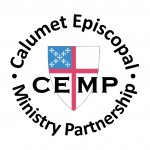History of St. Barnabas-in-the-Dunes
Christ Church Episcopal of Gary, Indiana was founded in 1908, just two years after the city itself emerged. A temporary church building was soon established in the downtown area of the city. In 1954 the church had come to realize that, due to the great development of the Miller subdivision and the Ogden Dunes area, planning for a mission church in that general northeast segment of the city would be highly appropriate. Property for such a church was donated to Christ Church. In 1960, however, some more definite action was taken by some interested Episcopalians in the Miller area.
During Lent of 1960, meetings were held every week in the homes of interested members. The nucleus of St. Barnabas was thus formed and action was taken for the development of the mission church. The development moved rapidly; a name was chosen and with the combined efforts of everyone concerned, the first church service was planned for the 17th of June, St. Barnabas Day, in Dr. W. A. Nelson’s waiting room. By the middle of July, the expansion was so great that it was necessary to move to Nobel School directly across the street from the church property.
Soon thereafter, and advisory board was chosen and the women formalized their organization. They soon sponsored a Sunday school and a picnic, and they started working on Christmas decorations to sell. The Sunday School was started and increased in membership each Sunday. The first baptism for the church was on September 18th when Diane Audrey Thiene was baptized. By Christmas 1960, St. Barnabas was planning to be in a permanent building on the church property. Father Arlo Lienbach was the first Rector of the church.
In 1961, the land for the new church building had been paid for and preparations were underway to build. Both the men’s and women’s groups were growing and becoming active in their temporary quarters. The Men of St. Barnabas hosted a Deer & Beer dinner for the men and boys of the church. Meanwhile, the women were conducting many other kinds of activities such as dance classes and Christmas sales. The popular English Tea started in the late 1970s.
Since our beginnings, Coffee Hour has been an important part of our history. Simple fare of coffee and a sweet were originally served. Later, a more nutritious meal became common. Father Charles Hensel, who was our second long-term priest and who returned in the 90s to supply and join the CEMP clergy team, gave interesting history-based sermons. These led to conversations after the service, which became Coffee Hour. Being a small parish, this kept us connected, provided a time to greet visitors, and to offer some warm sustenance to our senior members who lived alone.
In the 80s, Father Donald Milligan made a strong effort to engage youth. He coached a baseball team for a local high school and organized camping trips to the Boundary Waters in Minnesota. Later that decade, Father William Klatt shared his intellectual knowledge and college chaplain experiences from Purdue with us.
During Father Robert Lynn’s tenure, we reached out to the community by opening Episcopal Community Services (ECS), a home setting that offered food, clothing, and homework tutoring. We also provided school supplies by filling shoeboxes with elementary school necessities. Today we collect larger quantities of supplies for a Gary school chosen each year.
Numerous supply priests, including Father Dewey Schartzenburg, Pastor Kris Graunke, and Father Maxwell Johnson, provided us with spiritual guidance, memorable sermons, and pastoral care,
Mother Delores Weins was named Priest-in-Charge in 2008. Her musical talents still enable us to enjoy the hymns she recorded on the Clavinova, a gift to her and us by her close friend. She also introduced the Alpha Series to the neighborhood.
Since 2012, we are happy to be a part of CEMP and grateful to have Father Michael Dwyer as our Priest-in-Charge.

